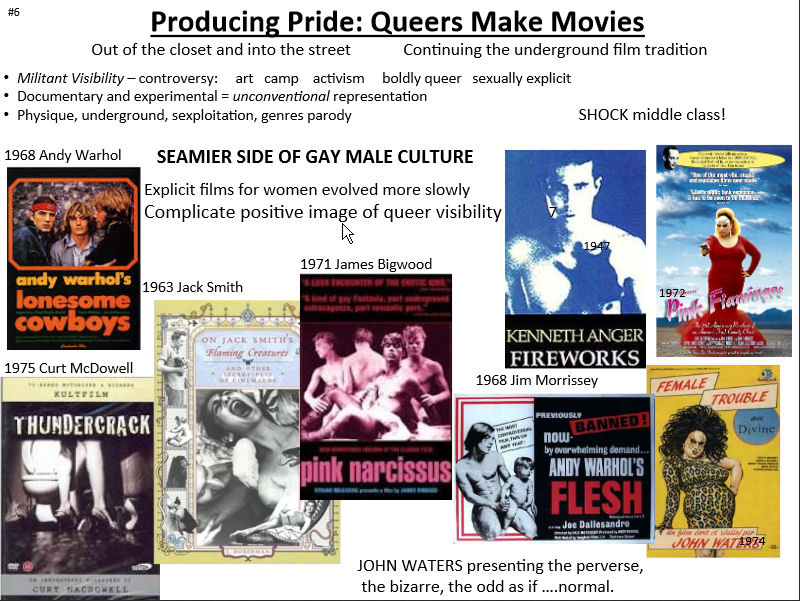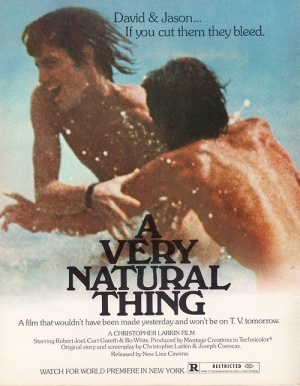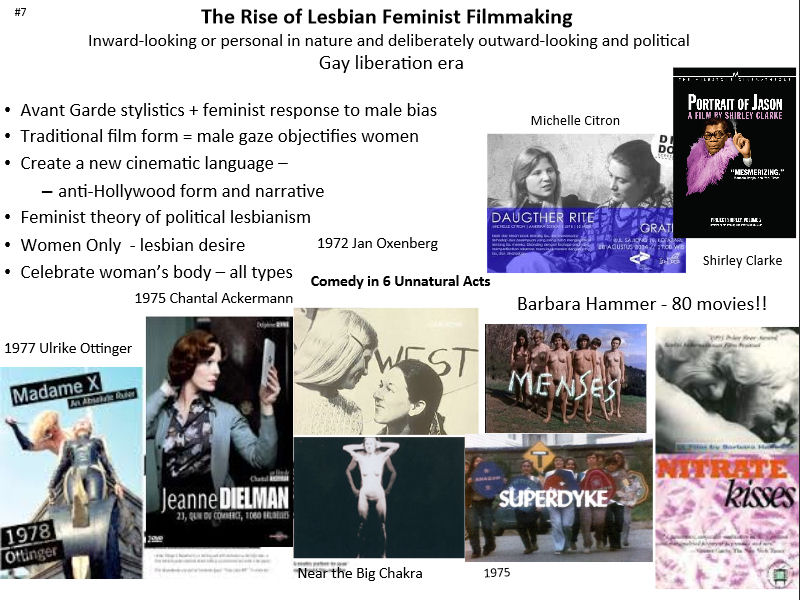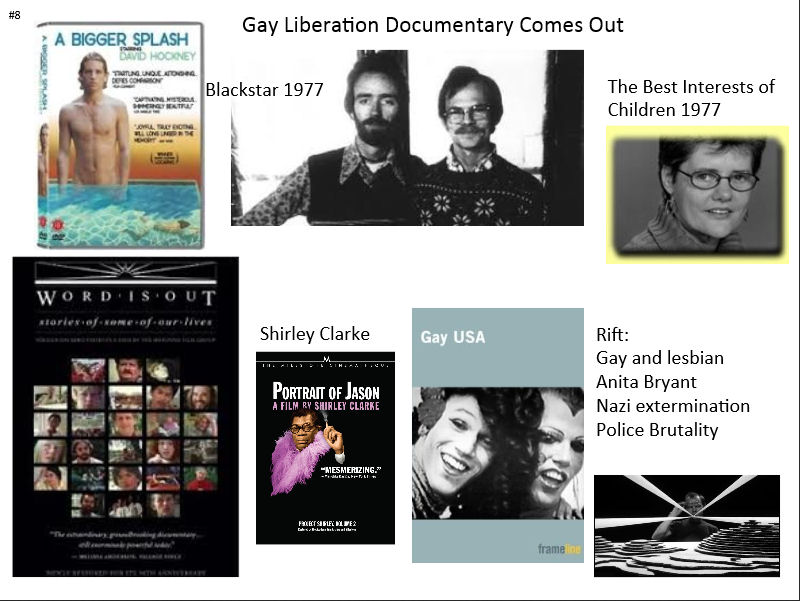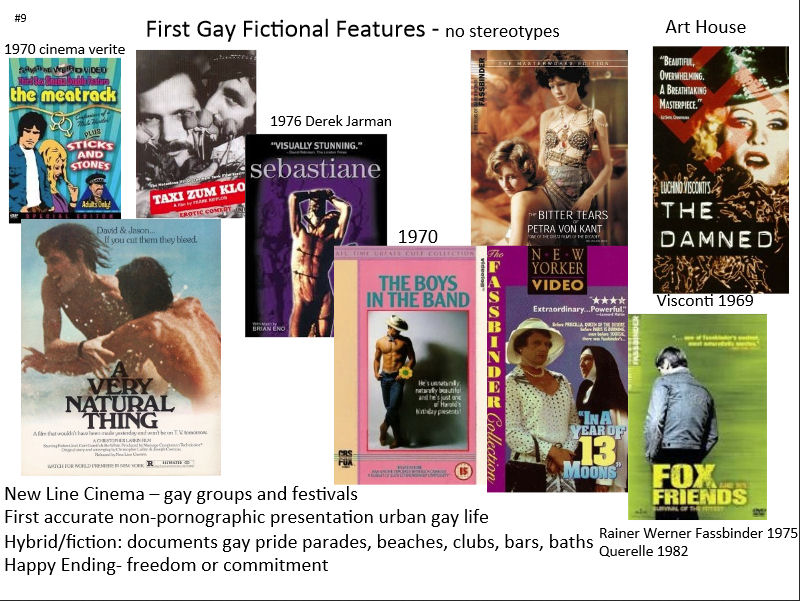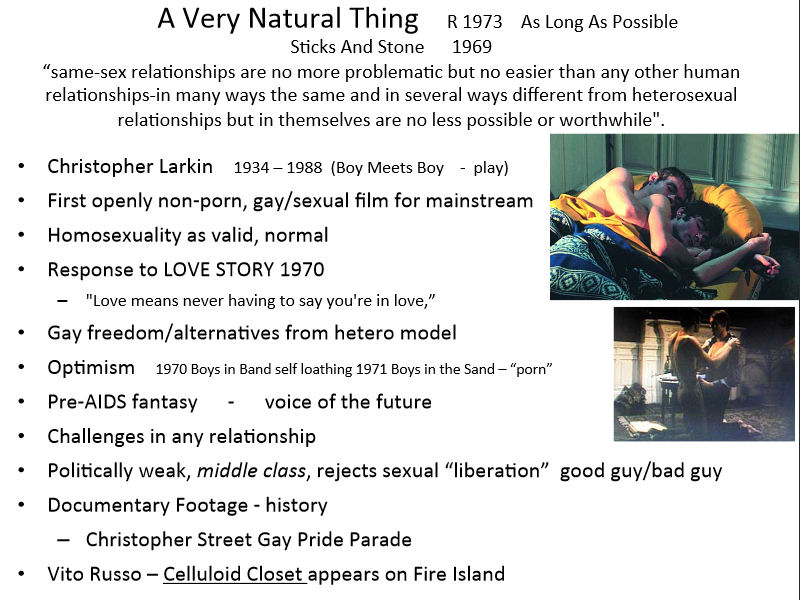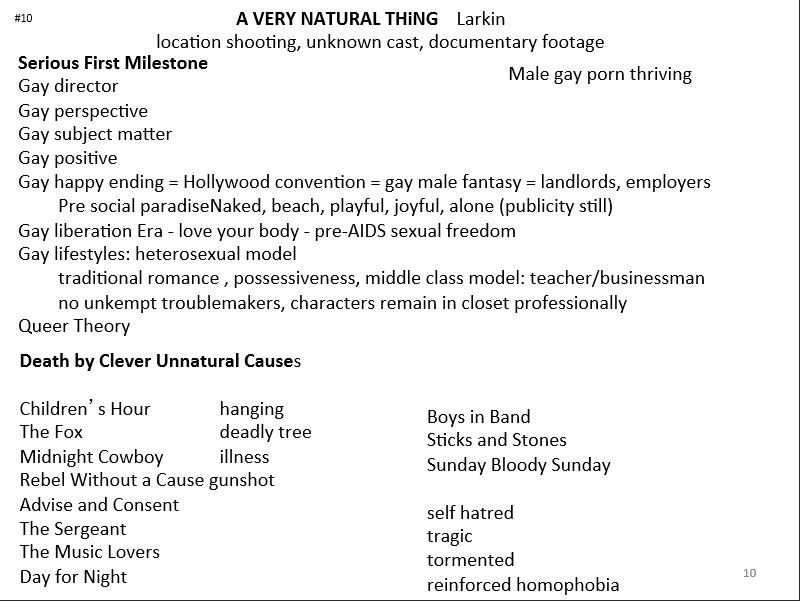Producing Pride
A Very Natural Thing
1973 American Independent Feature
Review Links CinemaQueer.com analysis from 2010
New York Times review from 1974
Connie's
Presentations
Scott's Clips
Mainstream movie context for A Very Natural Thing (1973) A Very Natural Thing was trying to counter.
The Best - Sunday Bloody Sunday (1971):
Sunday, Bloody Sunday , excerpts from 1971 mainstream British feature,
about 9 minutes long.Bonus!
The In-Between - The Last of Sheila (1972):Psycho ). They were
former lovers , but both were closeted at the time. In addition, the producer of the movie, Ross Hunter, was also a closeted gay man.
The Last of Sheila , excerpts from 1972 mainstream Hollywood feature,
about 9 1/2 minutes long.
The Worst - Diamonds Are Forever (1971):The Last of Sheila , in tone it far worse.
Mr. Kidd and Mr. Witt are psychopathic killers, who get summarily dispatched by James Bond in particularly gruesome manners, one of which is overtly sexual.
The word "homosexual" is never said, but the cues are clear --
they walk off holding hands after the murder of a diamond smuggler (beginning of the clip), and they are effete phonies, especially compared to the suave, heterosexual Bond (end of the clip).
Some audiences laughed and cheered when Bond killed them, obviously what the movie makers wanted.
Diamonds Are Forever , excerpts from 1971 mainstream British feature,
about 5 1/2 minutes long.
Other Movies in this Category that You Might Enjoy
Sunday Bloody Sunday (1971)
Description from The Advocate magazine's
The Top 175 Essential Films of All Time for LGBT Viewers :
That Certain Summer (1972)
Scott's Comments:
The War Widow (1976)
Description from
The Internet Movie Database :
Scott's Comments:That Certain Summer above, this early TV movie is very hard to find, but you can watch a YouTube upload here , or contact Linda Coleman or Casey Sutherland who have a burned DVD made from an off-air VHS recording.
Word Is Out (1977)
Scott's Comments:
Out of the Closet - LGBTQ Portrayals in Movies After the Stonewall Riots (1969)
Osher Lifelong Learning
Institute
Connie Hossier , InstructorScott Badman ,
Instructor
